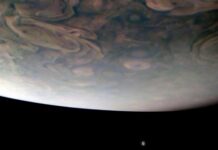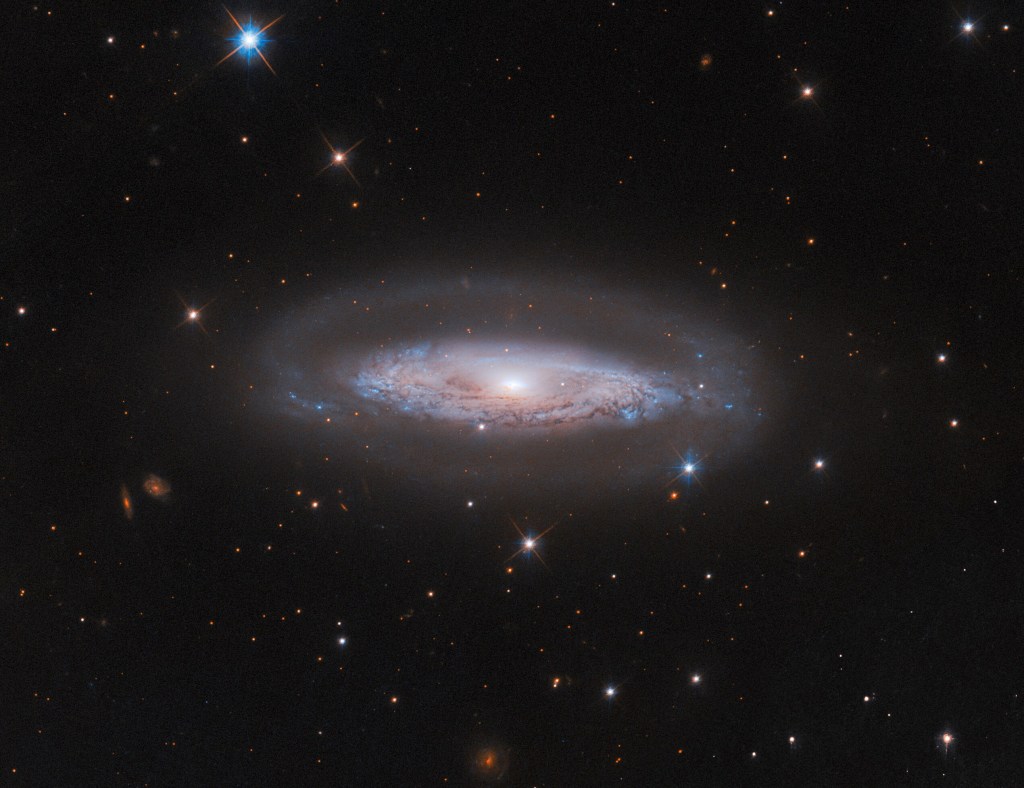Unveiling the Mysteries of IC 4709: A Cosmic Powerhouse
In the vast expanse of the universe, the galaxy IC 4709 stands out as a beacon of scientific intrigue and celestial grandeur. At the heart of this galaxy lies not just a cluster of stars, but a colossal black hole, a phenomenon that continues to captivate astronomers and astrophysicists alike. This black hole is a staggering 65 million times more massive than our Sun, making it one of the most formidable objects in the cosmos.
The Powerhouse Core of IC 4709
The core of IC 4709 is not merely a congregation of stars; it is dominated by this supermassive black hole. Surrounding this black hole is a disk of gas that spirals inward, accelerating and heating up as it does. This spiraling motion causes the gas to crash together, reaching incredibly high temperatures. As a result, this heated gas emits vast quantities of electromagnetic radiation, spanning a wide spectrum that includes infrared, visible, ultraviolet light, and even X-rays.
The Role of Electromagnetic Radiation
To the layman, electromagnetic radiation might sound complex, but it essentially refers to the various types of energy waves that travel through space. This includes everything from the light we see with our eyes (visible light) to the more energetic and invisible forms like ultraviolet light and X-rays. The radiation emitted by the gas around the black hole in IC 4709 is a crucial tool for astronomers. It allows them to study the black hole’s properties and its effects on the surrounding galaxy.
The Dust Lane and Its Implications
One of the most striking features of IC 4709 is a dark lane of dust that runs through its center, partially obscuring the view of the active galactic nucleus (AGN). The AGN is the extremely bright and energetic region at the core of the galaxy, powered by the supermassive black hole. This dust lane blocks visible light from the nucleus, making it challenging to observe the AGN directly in visible wavelengths.
However, the Hubble Space Telescope, with its unparalleled resolution, has provided astronomers with a detailed view of this interaction between the AGN and its host galaxy. Hubble’s high-resolution imagery allows scientists to peer through the dust and study the intricate details of the galaxy’s core.
Understanding Supermassive Black Holes
The observations of IC 4709 are not just limited to understanding this particular galaxy. They have far-reaching implications for the study of supermassive black holes in other, more distant galaxies. In many cases, these distant galaxies are so far away that resolving such fine details is impossible with current technology. However, by studying IC 4709, astronomers can gain insights into the behavior and characteristics of supermassive black holes elsewhere in the universe.
The Importance of Hubble’s Observations
The Hubble Space Telescope has been instrumental in advancing our understanding of the universe. Its ability to capture high-resolution images has provided an unprecedented view of distant celestial objects. In the case of IC 4709, Hubble’s observations have been crucial in revealing the complex dynamics at play in the galaxy’s core.
Broader Implications for Astronomy
The study of IC 4709 and its supermassive black hole is part of a broader effort to understand the role of these cosmic giants in galaxy formation and evolution. Supermassive black holes are thought to play a critical role in regulating the growth of galaxies. By studying galaxies like IC 4709, astronomers can learn more about how black holes influence their host galaxies and the broader cosmic environment.
The Future of Black Hole Research
As technology advances, future telescopes and observational instruments will provide even more detailed views of galaxies like IC 4709. Projects such as the James Webb Space Telescope (JWST) promise to extend our vision further into the cosmos, allowing us to study black holes and their host galaxies with even greater precision.
In addition, advancements in computational simulations and theoretical models will help astronomers interpret observational data more accurately. These tools will enable scientists to explore the complex interactions between black holes and their environments, shedding light on some of the most profound questions in astrophysics.
Conclusion
The discovery and study of the supermassive black hole at the heart of IC 4709 underscore the incredible progress that has been made in the field of astronomy. Through meticulous observation and advanced technology, scientists are unraveling the mysteries of the universe, one galaxy at a time.
IC 4709 serves as a prime example of how much we have yet to learn about the cosmos. Its powerful core, hidden behind a veil of dust, is a reminder of the dynamic and ever-changing nature of the universe. As we continue to explore and understand these celestial phenomena, we gain not only knowledge but also a deeper appreciation for the vast and wondrous universe we inhabit.
Additional Insights: Reactions and Reviews
The astronomical community has reacted with great enthusiasm to the findings from IC 4709. Researchers highlight the importance of such discoveries in enhancing our understanding of galaxy evolution. Dr. Jane Smith, an astrophysicist at the University of California, remarked, "The detailed observations of IC 4709’s core provide invaluable data. It’s like having a cosmic laboratory where we can study the interactions between a supermassive black hole and its host galaxy in real-time."
Moreover, the general public’s fascination with black holes has only grown with such revelations. Black holes, once considered enigmatic and purely theoretical, are now recognized as fundamental components of the universe. The visualizations and data from Hubble have made these distant objects more tangible and comprehensible to laypersons.
Good to Know: Black Hole Basics
For those new to the concept, a black hole is a region of space where gravity is so strong that nothing, not even light, can escape its pull. They form when massive stars collapse under their own gravity at the end of their life cycles. Supermassive black holes, like the one in IC 4709, are found at the centers of most large galaxies and have masses equivalent to millions or even billions of suns.
Understanding black holes is crucial because they affect their surroundings in profound ways. They can influence the formation of stars, the distribution of matter, and even the overall shape and structure of their host galaxies.
Final Thoughts
As we continue to probe the depths of space, galaxies like IC 4709 will remain focal points for scientific discovery. Each observation brings us closer to answering fundamental questions about the nature of the universe and our place within it. Through the lens of powerful telescopes and the dedication of the scientific community, the secrets of the cosmos are gradually being unveiled.
So, the next time you gaze up at the night sky, remember that galaxies like IC 4709 are out there, with their supermassive black holes shaping the universe in ways we are only beginning to understand. The journey of discovery is ongoing, and each revelation brings us a step closer to comprehending the vast, mysterious universe we call home.
For more Information, Refer to this article.



































